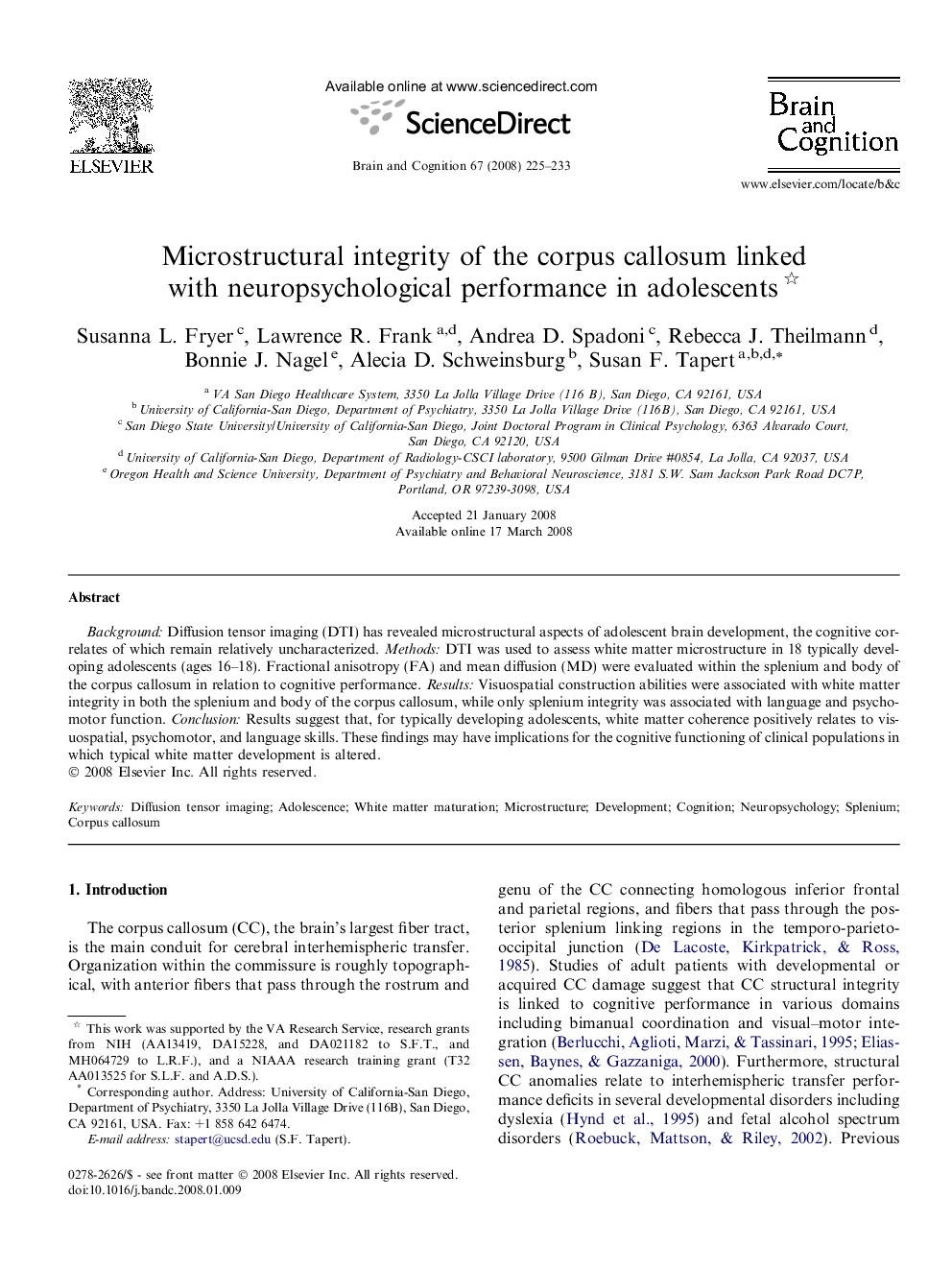| Article ID | Journal | Published Year | Pages | File Type |
|---|---|---|---|---|
| 924899 | Brain and Cognition | 2008 | 9 Pages |
Background: Diffusion tensor imaging (DTI) has revealed microstructural aspects of adolescent brain development, the cognitive correlates of which remain relatively uncharacterized. Methods: DTI was used to assess white matter microstructure in 18 typically developing adolescents (ages 16–18). Fractional anisotropy (FA) and mean diffusion (MD) were evaluated within the splenium and body of the corpus callosum in relation to cognitive performance. Results: Visuospatial construction abilities were associated with white matter integrity in both the splenium and body of the corpus callosum, while only splenium integrity was associated with language and psychomotor function. Conclusion: Results suggest that, for typically developing adolescents, white matter coherence positively relates to visuospatial, psychomotor, and language skills. These findings may have implications for the cognitive functioning of clinical populations in which typical white matter development is altered.
